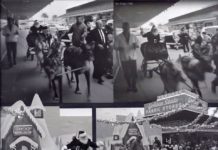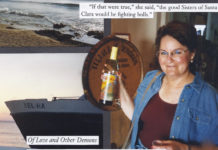
It’s a new baseball season. One hundred and fifty years ago, pitchers were required to throw the ball over the center of the base so the striker could hit it. The game we know and love today was quite different in the 19th Century. It wasn’t until 1893 that the pitcher’s rubber was moved out to 60 feet, 6 inches. By that time, pitchers were trying to strike the batter out.
Professional baseball is divided into eras: the 19th Century (1871-1899), the Deadball Era (1900-1919) and the Modern Era (with its many subheadings). Home runs were rare until Babe Ruth began pounding a “livelier” ball over outfield fences at a previously unimagined rate.
“Fans” didn’t exist in the 19th Century. People who followed base ball (two words) were known instead as “cranks.” A crank was a crazy person. The term was meant as an insult. When it became accepted into the vernacular, a new insult had to be found. Cranks became known as “fans.”
The word may not sound insulting, but what do fans do? They blow air, just as leather-lunged cranks blew air at the players, the managers and, especially, at the umpires.
How many know that San Diego County is “The Birth Place of Baseball in California?” The first recorded evidence of baseball being played in the Golden State appears in the diary of Azariah Smith, an 18-year-old private with the Mormon Battalion. On March 6, 1847, Smith, while in bivouac at Mission San Luis Rey near present day Oceanside, wrote, “We drilled as before and through the day we play ball and amuse ourselves the best we can. It is cool weather and clothing scarce.”
The first organized game in San Diego was not played until almost 25 years later on May 6, 1871 when 18 eager ballists met on the (Horton) Plaza in New Town. Nobody bothered to keep score, proof that San Diego has always been laid back.
Although it took a long time for baseball to blossom in San Diego, a surprising number of 19th Century ballplayers found their way to paradise and died here. The following nine profiles of San Diego transplants from the “pre-deadball era” would make a competitive “nine” on any diamond. Though technically not “deadballers,” these men played with a dead ball and they are, most certainly, dead.
So, here, revitalized in alphabetical order, your S-a-n-D-i-e-g-o Deadball Nine!
Bill Bernhard (1899-1907)
Born: March 16, 1871 – Clarence, New York
Died: March 30, 1949 – San Diego, California
“Strawberry Bill” Bernhard complied a solid 116-81 major league record pitching for the Philadelphia Phillies (1899-1900), Philadelphia Athletics (1901-1902) and Cleveland Bronchos/Naps (1902-1907). With a calm and steady personality, Berny became an effective minor league manager through 1917. He moved to Southern California in the 1930s, became the information chief at Santa Anita Racetrack and, later, a shipping clerk at Stationer’s Corporation in San Diego. His remains are interred at Clarence Fillmore Cemetery in Clarence, New York.
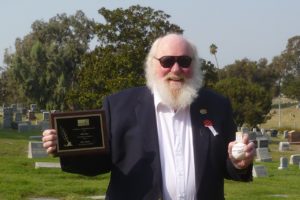
Warren William “Hick” Carpenter (1879-1892)
Born: August 16, 1855 – Grafton, Massachusetts
Died: April 18, 1937 – San Diego, California
“Hick” Carpenter was the best left-handed third baseman in the history of baseball. His nickname came from the hickory bat he used while playing for the Cincinnati Reds. He was a solid hitter and outstanding fielder in an era when players did not use gloves. His best season was 1882 when he batted .342 and led the National League in hits and RBIs. After baseball, he worked as a railroad conductor and, eventually, an inspector with the U.S. Customs Service in Arizona, Texas and California. In San Diego, he renewed his friendship with former Reds teammate, second baseman Bid McPhee. The two attended some Padres games at Lane Field but were most often seen at the bay with their fishing poles. Carpenter is buried at Mount Hope Cemetery, San Diego in an unmarked grave.

Clarence “Lefty” Hopper (1898)
Born: May 27, 1874 – Jersey City, New Jersey
Died: September 27, 1959 – San Diego, California
“Lefty” Hopper pitched and lost two games for the 1898 Brooklyn Bridegrooms. Somehow, he managed to score a run for the Bridegrooms. The Brooklyn Eagle described Hopper as “slight in build and apparently too light for the company.” He is buried at Greenwood Memorial Park in San Diego.
Albert Krumm (1889)
Born: January 13, 1865 – Pittsburgh, Pennsylvania
Died: June 15, 1937 – San Diego, California
Poor Al Krumm had a reputation for being a troublemaker, but is only remembered for surrendering 11 runs and losing the single game he pitched in 1889 for his hometown Pittsburg Alleghenys. One of his teammates was Billy Sunday who, prior to Billy Graham, went on to become America’s best-known evangelist. Krumm returned to the steel mills and oblivion. It is not known how or when he arrived in San Diego. He is buried at Glen Abbey Memorial Park in Bonita, California.
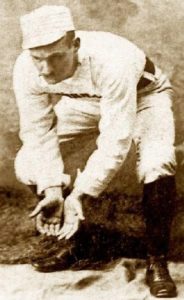
John Alexander “Bid” McPhee (1882-1899)
Born: November 1, 1859 – Massena, New York
Died: January 3, 1943 – San Diego, California
Bid McPhee acquired his nickname at an early age by “doing the bidding of his elders.” He is recognized as the greatest second baseman of the 19th Century. Bid did not use a glove until 1896 and toughened his hands by soaking them in salt water.
“I never use a glove on either hand in a game. I have never seen the necessity of wearing one, and besides, I cannot hold a thrown ball if there is anything on my hands. The glove business has gone a little too far. It is all wrong to suppose that your hands will get battered out of shape if you don’t use them. True, hot-hit balls do sting a little at the opening of the season, but after you get used to it there is no trouble on that score.”
When an injury forced him to wear glove in 1896, he set a fielding record that stood until 1925. McPhee retired to Ocean Beach in obscurity and, in 1932, The Sporting News incorrectly reported that he was deceased. He wrote to a friend that it was “not often a man has the pleasure of reading his own obituary.'”
McPhee’s Hall of Fame plaque noted his “sober disposition and exemplary sportsmanship.” His remains are in Shepard Lane, Cypress View Mausoleum in San Diego.
Charlie Newman (1892)
Born: November 5, 1852 – Juda, Wisconsin
Died: November 23, 1947 – San Diego, California
In 1892, Charlie Newman was batting .333 for the New York Giants when he was stricken with typhoid fever. The outfielder returned to his native Wisconsin for recuperation and joined the Chicago Colts late in the season. He never regained his early promise and became a policeman. Newman served as chief of police in Janesville, Wisconsin from 1921 until 1937 and retired in San Diego. Chief Newman is buried in Hillcrest Cemetery in Albany, Wisconsin.
Joe Quest (1878-1886)
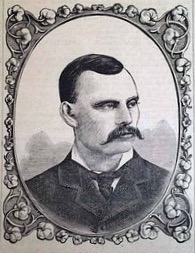
Born: November 16, 1852 – Newcastle, Pennsylvania
Died: November 14, 1924 – San Diego, California
You’ve heard of a “Charley horse.” Joe Quest played ten years in the major leagues, but is remembered solely for introducing the term charley horse to the baseball world. There are several versions about the origin of “charley horse” and they all lead back to Joe Quest. The earliest (and least colorful) appeared in the Boston Globe in 1886. “Quest gave the name ‘Charlie horse’ to a peculiar contraction and hardening of muscles and tendons of the thigh.”
In 1871, at age 18, the first year of professional base ball, Quest was with the Cleveland Forest Citys. From 1879 through 1882, he played second base for Cap Anson’s three-time National League champion Chicago White Stockings. Anson said of the second sacker: “His strongest point was trapping an infield fly, and in this particular line he was something of a wonder.”
He became embroiled in an “affair of the heart” and was traded to the Detroit Wolverines “before he got shot.” Following his playing days, Quest became an umpire and worked the 1886 World Series. Anson got him a job at City Hall in Chicago where he was accused of embezzlement. In 1912, it was reported Quest was dying in Alabama, but he moved to San Diego and lived 12 more years. On his death certificate, his occupation is listed as “ballplayer.” Joe is buried in an unmarked grave at Mount Hope Cemetery.
Harry Raymond (1888-1892)
Born: February 20, 1862 – Utica, New York or Sauquoit, New York
Died: March 21, 1925 – San Diego, California
Raymond, a man of mystery, was one of the last third basemen not to use a glove. He didn’t have much use for a bat either. In 1889, he created the fewest runs of any regular in the big leagues, but in 1890, his best year, he hit .259 for the Louisville Colonels (American Association). He also scored the winning run in the last championship series game between the American Association and the National League (Brooklyn Bridegrooms). It wasn’t until almost 100 years later that it was discovered his real name might have been Harry Truman. He is buried at Greenwood Memorial Park.
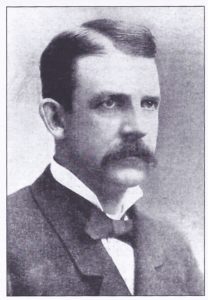
Albert Goodwill Spalding (1871-1878)
Born: September 2, 1849 – Byron, Illinois
Died: September 9, 1915 – San Diego, California
Big Al Spalding was one of baseball’s earliest stars. His lifetime numbers on the mound were 252-65. Playing for the Boston Red Stockings, Al was the winningest pitcher in baseball from 1871 through 1875. In 1876, he continued as the top hurler in the newly formed National League throwing fastballs for the Chicago White Stockings. He even posted a .313 lifetime batting average.
Spalding didn’t use a glove until 1877 when he had a vision for the future. He left the game to devote full attention to Spalding Sporting Goods which began producing quality baseball equipment: bats, balls, gloves and uniforms. The first Spalding’s Official Rules Guide for Baseball appeared in 1878 and continued to be published annually until 1942. He became president of the White Stockings in 1882 and was briefly president of the National League.
After his wife’s death in Chicago, he married his mistress, Elizabeth. They moved to San Diego in 1901. Elizabeth was a close associate of Madame Katherine Tingley and the newly weds built a mansion on the grounds of her Theosophical Society property on Point Loma. Al was involved in civic activities and politics and almost became a U.S. Senator. When he died, he left a $60,000 estate to his wife and three sons. Madame Tingley assumed she would inherit a huge chunk of the Spalding fortune, but, in baseball parlance, she got shutout.
According to his will, Spalding’s ashes were supposed to be scattered over Point Loma, but in 2013, a woman named Rebecca claimed to be in possession of a bronze urn that “contains the incinerated remains of Albert G. Spalding, cremated on September 11, 1915.”
Don’t mess with Madame Tingley? Who to paraphrase? “Dust in the Wind” by Kansas or “Where have you gone, Al Spalding?” by Simon and Garfunkel.
Publisher Note:
This column won First Place at the 2018 San Diego Press Club 45th Annual Excellence in Journalism Awards for the Non-Daily Newspapers, Sports category


